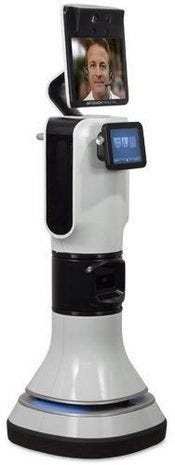Healthcare Analytics Sought For Population Health Management
Hospitals have keen interest in analytics for population health management, but tech is still in early stages, according to new survey.


Remote Patient Monitoring: 9 Promising Technologies (click image for larger view)
Hospitals and healthcare organizations are drawn to analytic applications that can help them do population health management, a new survey of CIOs and other C-level healthcare executives shows. But the poll also revealed it's early in this game and that the majority of healthcare systems are just starting to figure out what kinds of tools they're going to need to navigate the new terrain.
In total, 102 organizations responded to the survey, which was fielded in May and June by the eHealth Initiative (eHI) and the College of Health Information Management Executives (CHIME).
Eighty-two percent of the respondents identified population health management (PHM) as a key focus of analytics in coming years. And nearly 80% felt that leveraging big data and predictive analytics -- two approaches often used in PHM -- was important to their organization's goals.
[ Is implementing analytics worth the investment? Read Big Data Analytics: Where's The ROI? ]
On the other hand, 84% of the healthcare leaders said implementing big data and predictive tools was a significant challenge to their organization. Only 45% of respondents said their organizations had implemented a flexible and scalable plan to adapt to the growing volume of electronic data available to them.
A few other key findings:
-- A large majority of respondents (82%) said health information exchange was important to them.
-- Nearly 90% used analytics for revenue cycle management.
-- Two-thirds used analytics to prevent fraud and abuse.
-- Quality improvement was the most popular use for analytics, reported by 90% of respondents.
-- The most common data sources were administrative data (77%) and claims-based data (75%).
-- Only 18% of respondents have staff sufficiently trained to collect, process and analyze data. Sixteen percent said they overcome staff shortages by employing third-party organizations such as consultants. The lack of good structured data in electronic health records came up in both of the two panel discussions in a webinar convened to respond to the survey results.
Frank Clark, VP for information technology and CIO at the Medical University of South Carolina said that most of the electronic data that MUSC has collected for the past 20 years is unstructured. He expressed hope that a natural-language processing (NLP) vendor that his organization is working with can extract the key data elements from that free text so his organization can start to identify patients who are at risk of becoming sick.
Curt Sellke, VP of analytics for the Indiana Health Information Exchange (IHIE), which connects over 90 of the 120 hospitals in Indiana, said IHIE's clinical data repository contains plenty of transcribed reports. He noted that IHIE's academic partner, the Regenstrief Institute, is working on NLP, but added, "We're at the starting point on that."
In the second panel discussion, Yvonne Hughes, CEO of Coastal Carolinas Health Alliance, another HIE, said that accountable care organizations (ACOs) depend mainly on claims data for a broad picture of patient care. It would be better if they could use a community record that combined clinical data from many EHRs along with claims and other data, she said.
Jonathan Niloff, MD, chief medical officer of MedVentive, a unit of McKesson, suggested that setting such a goal might be counterproductive because EHRs are a flawed source of data and not interconnected. For retrospective analysis of population health management, he said, claims data from payers is the best source. But for functions such as risk stratification, decision support and care management, near-real-time data is needed. A combination of billing data, lab data and Surescripts prescription information, although not perfect, could do the trick, he said.
Pamela McNutt, senior VP and CIO of Methodist Health System in Dallas, expressed dissatisfaction with claims-based analytic tools developed by payers. Eventually, she said, analytics for tracking patients and sending out reminders for care management will be combined with cost and resource utilization tools on a single platform. But it's not there yet.
"Most ACOs are in an immature state," she said. "We don't even know the questions we need to be asking." Later, asked how she would define success in the analytics area, she said, "For those of us who are taking on risk, success is still about providing higher-quality care at lower cost. Products that can show ROI on those two fronts are what everyone wants."
Hughes said success will come from supplying providers with "clean, normalized data" from disparate systems so they can make decisions that will improve population health.
Niloff agreed with both of the other panelists. However, he added, good data must be imbedded in workflows and leveraged through automation to drive improvements in cost and quality.
About the Author
You May Also Like






